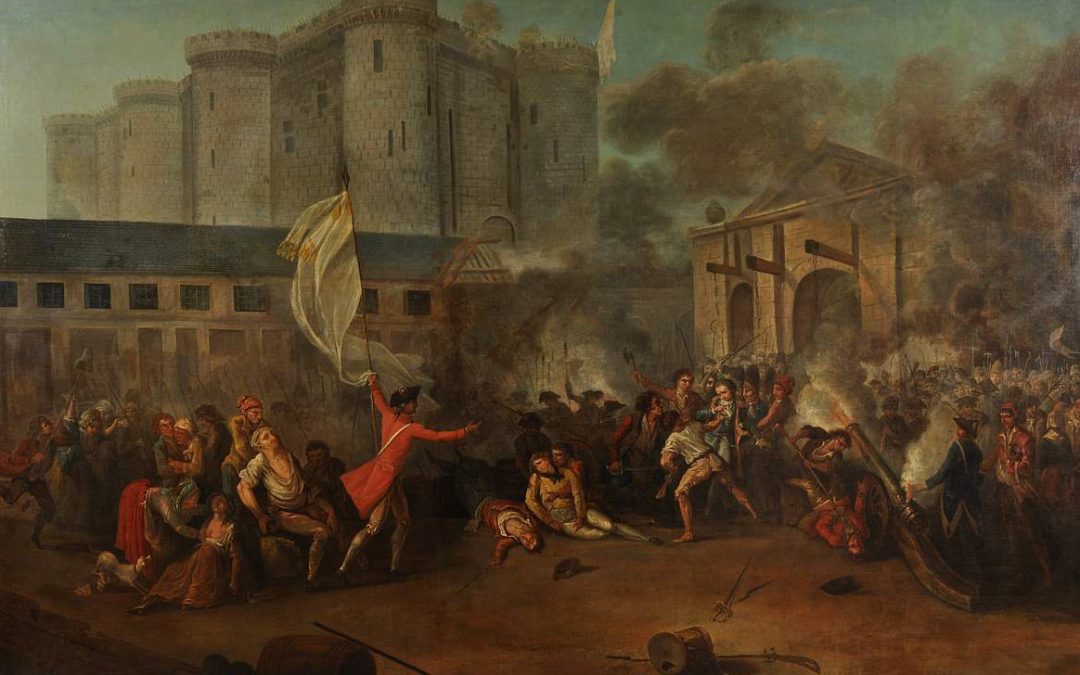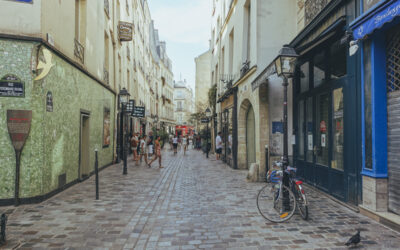The storming of the Bastille, Anonymous, Oil on canvas, H. 184,5 x L. 273,5 cm.
The history of the Bastille prison begins in the 1370th century with the construction of the fortress in record time, from 1383 to 1358. Only thirteen years! We are in XNUMX, during the reign of Charles V, at the worst hours of the Hundred Years' War. The kingdom of France is almost entirely in the hands of the English and its king, John “the Good”, their prisoner for two years.
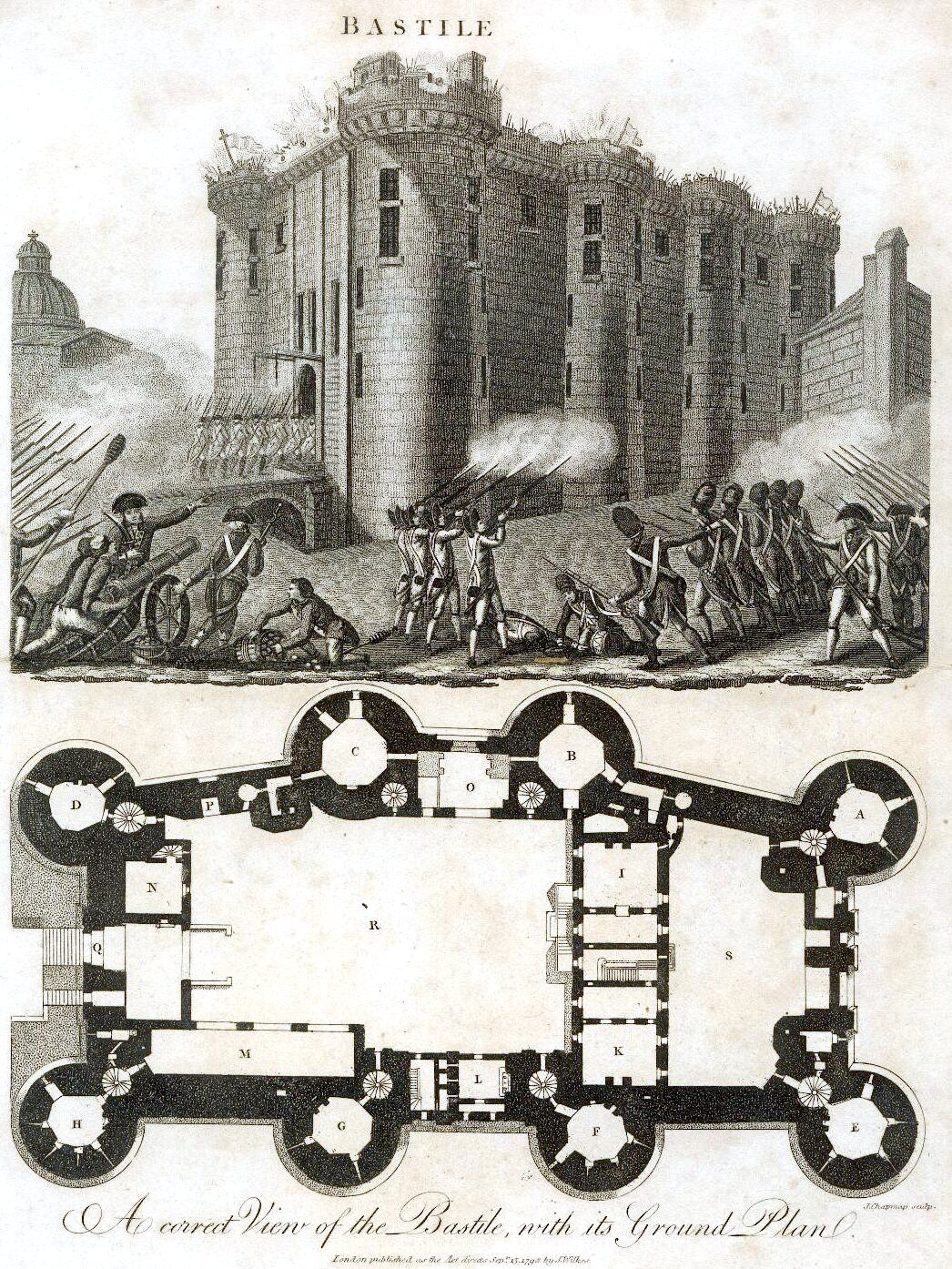
Plan of the Bastille, engraving by J. Chapman, published in London around 1792
A misfortune never comes alone, the people and the bourgeoisie of Paris revolted that year against the royal power. Led by the provost of merchants Etienne Marcel, Anne Hidalgo's distant predecessor, the mob invaded the royal palace on the Île de la Cité where young Charles, regent of the crown then aged 20 (his father was languishing in prison in England) witnesses, helplessly, the assassination of two grand marshals of his Court. Slaughtered before his eyes.
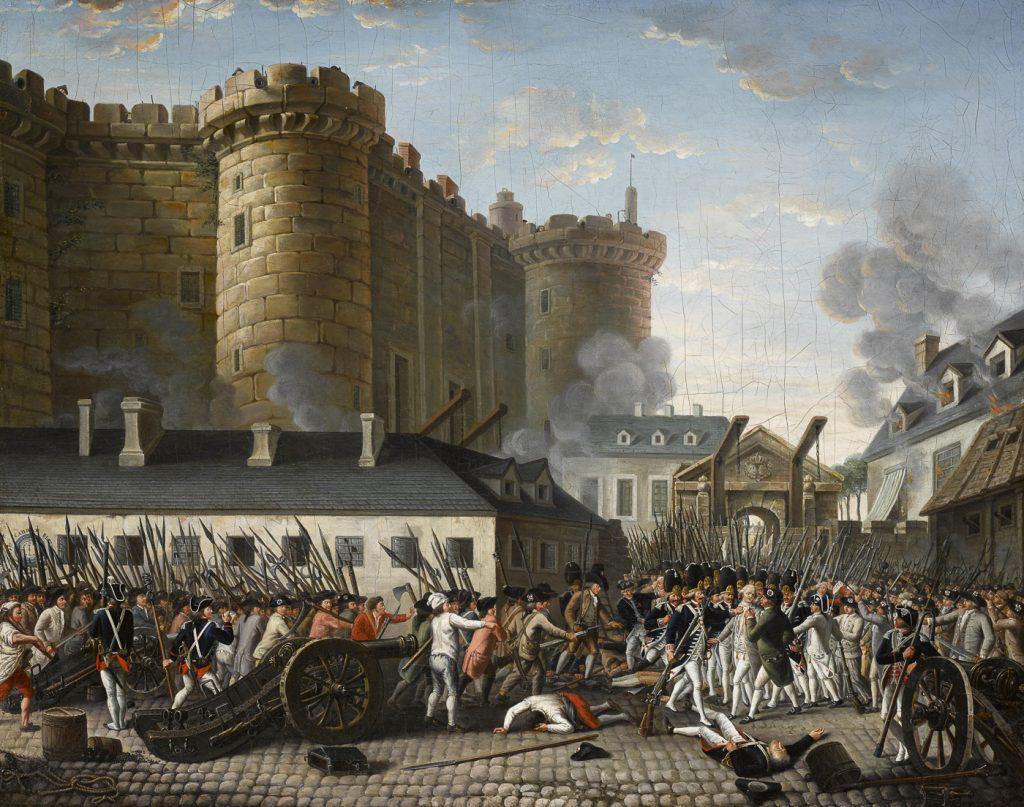
Capture of the Bastille. Arrest of Mr. de Launay, July 14, 1789, Anonymous. Around 1789
Crowned king in 1364, Charles V known as “The Wise” decided to ensure his security and that of his Court by going green further east, at the Hôtel Saint-Pol, the newly built palace “extra muros », in the current 4th arrondissement. Adjoining His Majesty's new suburban pavilion, the Bastille prison serves to dissuade the people from returning to play "yellow vests" as they had done on the Île de la Cité a few years previously.
It was only from the XNUMXth century, as France slowly transitioned from the feudal system of the Middle Ages to the royal absolutism of the Ancien Régime, that the Bastille was gradually transformed, if not into a five-star gulag. , at least in a place of deprivation of liberty equipped with a certain number of facilities.
Here, most of the prisoners, quite few in number, rather well born or even famous (the Marquis de Sade, Voltaire, among other personalities), have the right, in return for money, to have their home delivered, two centuries before smartphones. , their favorite foods, books, clothes. And, even, to receive visitors there – doctors, family, friends, gallant women. And this, in cells sometimes closer to the charming two-room apartment with a view than to the sinister dungeon.
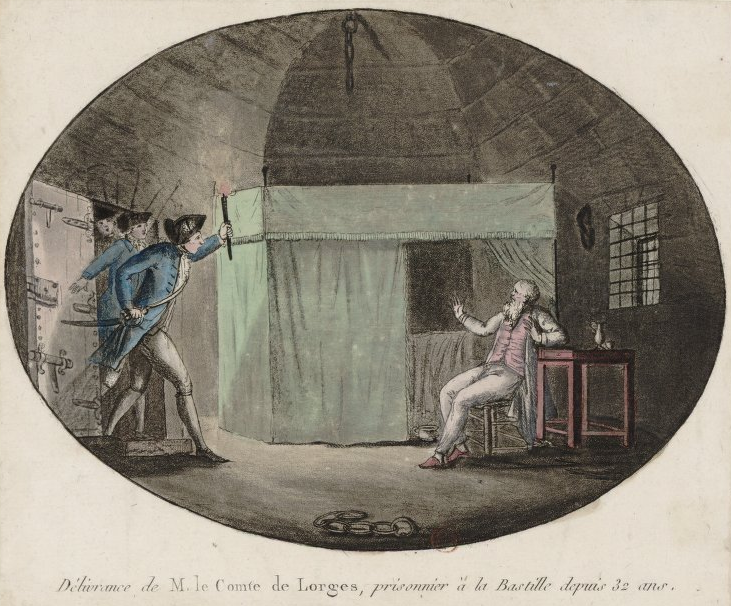
It is the king himself who is responsible for the reservation, by simple letter de cachet, that is to say a simple autograph of François/Henri/Louis – cross out the unnecessary entry and complete with the appropriate number – which leads to prison, without reason or trial. Towards the end of the reign of Louis XVI, the duration of stays extended, on average, from six months to two years. Hardly any more.
The fateful date of July 14, 1789 arrives. The immense fortified castle where seven inmates and an unfortunate governor – lynched that day – are bored, is rather the symbol of a moribund absolutism than that of a terrible “lubyanka” ( the Russian secret police prison) before its time.
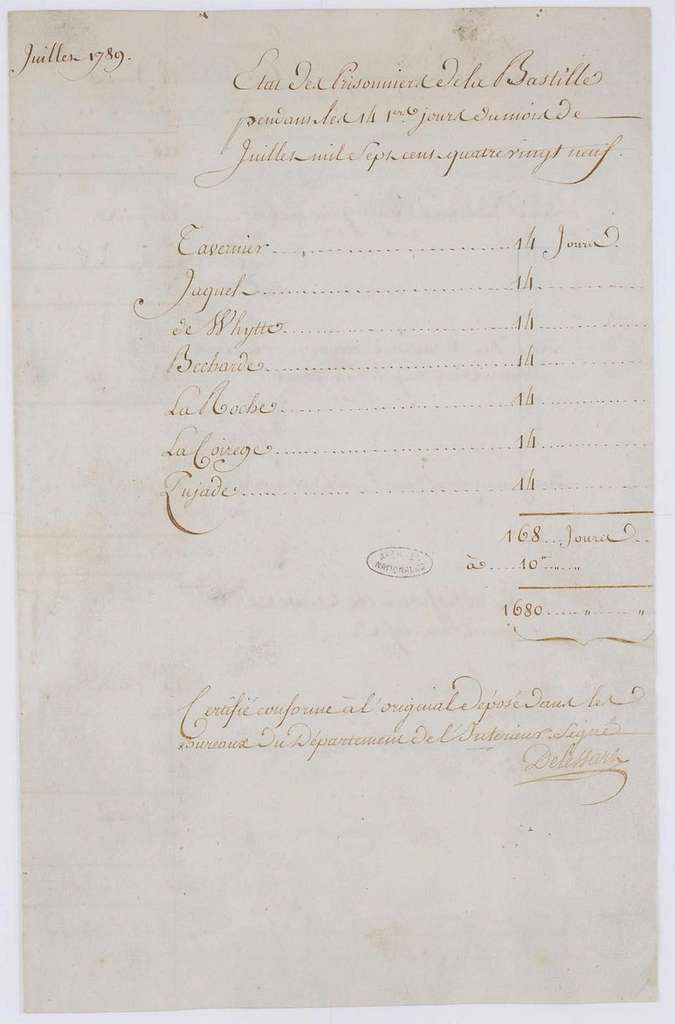
The reaction of the king, who would soon be nicknamed “Louis the Stupid” in revolutionary pamphlets, is known. “But is it a revolt? », he asked when the storming of the Bastille was announced. “No, Sire, it’s a revolution,” replied the Duke of Rochefoucauld-Liancourt.
The king's astonishment can be explained as follows: for him, the Bastille is no longer the symbol of much and he sees its assault as an almost innocuous event. He is wrong, of course, but it is true that the prison is no longer the heart of the penitentiary system.
Terribly costly to maintain for the Crown, a royal project that remained on the shelf had also planned its total demolition in 1784 in favor of the creation of a large square... to the glory of Louis XVI! The demolition will indeed take place, but by the people, seven years later, on this famous July 14 (and in the following weeks) which marks the first day of the republican adventure.
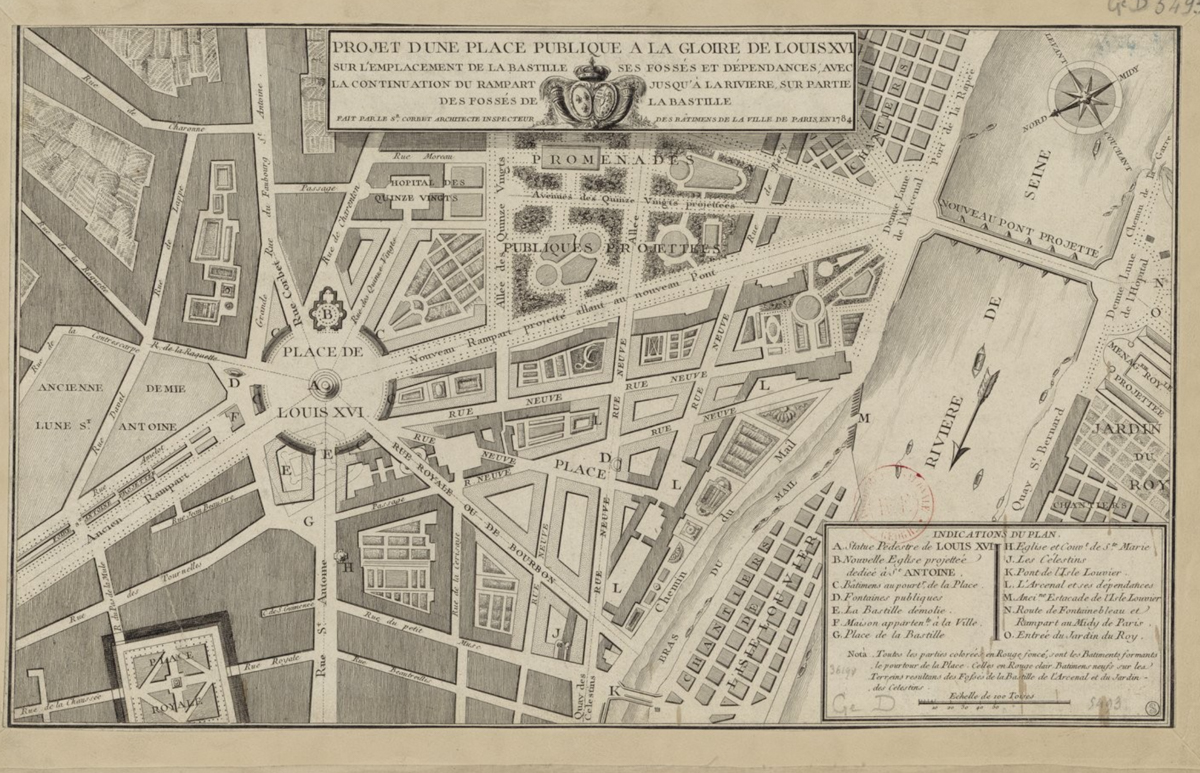
Project for a public square to the glory of Louis XVI on the site of the Bastille, its ditches and outbuildings with the continuation of the rampart (sic) to the river, on part of the ditches of the Bastille / made by the Sr Corbett 1784.
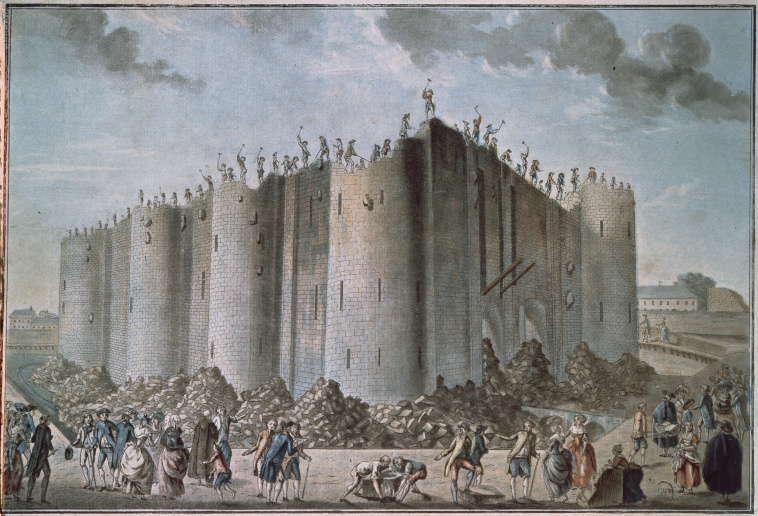
Demolition of the Bastille, print, published by Basset, 1789. Paris, Musée Carnavalet
Today, the remains of the Bastille are very rare: the outline of the walls on the square of the same name, some stones in the Henri-Galli square on the Quai des Célestins, others on the Bastille metro platforms; still others at the Concorde Bridge, completed in 1791 with the stones of the prison, so that the feet of citizens could tread at leisure on the infamous symbol of despotism.
Text: Arthur Goth-Moruzzi – Instagram
14.07.21
FOR PASSIONATES OFUS
The Enfants Rouges market, everyone loves it
Restaurants, merchants, a photo store, a bookstore... This is how the Red Children's Market presents itself, unique in its kind in the Marais and its capital because it is the only one to offer such a varied and varied range of restaurants. qualitative.
The Marais Jewish quarter in Paris
From the 13th century, the Marais was home to a Jewish community which remained there until its expulsion in the 14th century. Fleeing poverty and persecution, Jews from Eastern countries and those from Alsace settled there in the 19th century. Around rue des rosiers and Place Saint-Paul renamed Pletz…
Victor Hugo, the writer with a thousand talents
Born in 1802, Victor Hugo became a social writer, a playwright, a poet, a novelist and a romantic designer. Nicknamed the man-ocean then the man-century, he is a political figure and a committed intellectual. He found success with Notre-Dame-de-Paris in 1831 and with Les Misérables in 1862.
NOW ON THE MOOD MARSH
Divine brunch at the foot of Notre-Dame
Of course, officially, it is not the Marais. But at Son de la Terre, a barge recently moored at the Montebello quay (5th), the 4th arrondissement is in sight. Moreover, this one is incredible: on one side, it is Notre-Dame flooded with sunlight; on the other, the quays, the book sellers, the walkers, the joggers.
Saka, a cocktail bar like in Tokyo
Here is an address which gives the measure of the transformation of the Marais. And it's enough to silence the grumpy people whose mantra is: “It was better before…” No, everything was not better “before” in the Marais. Besides, there was no American bar like Saka, which cultivates a form of excellence that can only be found in Japan.
Jazz at 38Riv: The highlights of May
The only jazz club in the Marais, 38Riv is the temple of cool and swing. Rue de Rivoli, between Saint-Paul and Hôtel de Ville, its vaulted cellars are the home base of the new jazz scene. Every evening, the magic happens.

